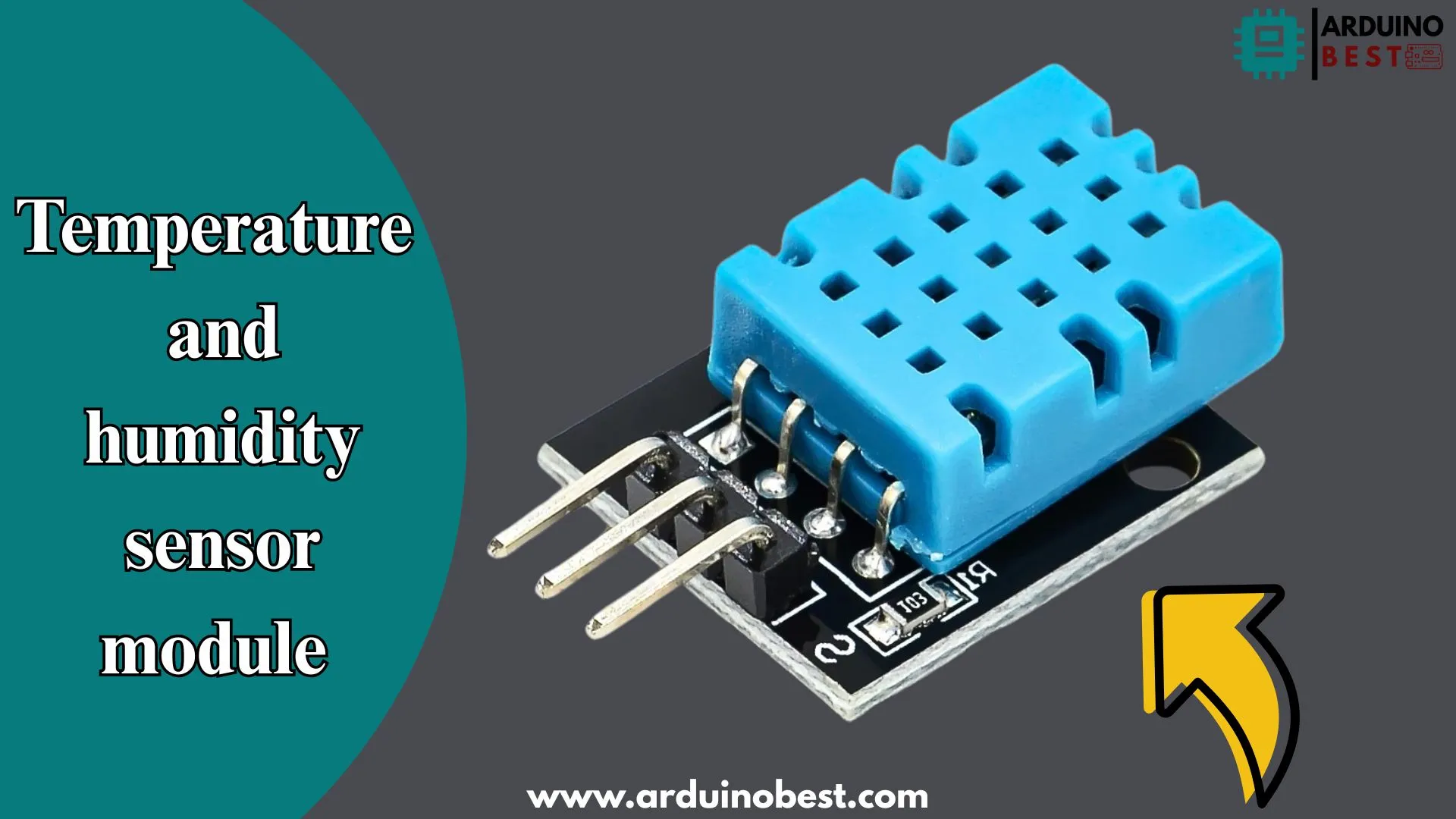Table of Contents
Introduction
Temperature and humidity sensor modules play a pivotal role in many modern applications. From weather stations and industrial automation to home smart systems, these sensors provide critical data for controlling and optimizing environments. Understanding how these modules work, how to choose the right one, and how to integrate them into your projects is essential for anyone working with environmental sensors.
In this guide, we’ll explore:
- The basic components of temperature and humidity sensor modules
- How these sensors operate to measure temperature and humidity levels
- Different sensor types and their applications
- How to integrate them into your projects, using platforms like Arduino and Raspberry Pi
For more detailed information on how to choose the right temperature and humidity sensor for your application, check out this detailed guide.
What is a Temperature and Humidity Sensor Module?
A temperature and humidity sensor module is a device used to measure both the temperature and the relative humidity of the environment. These sensors are often used in various applications, from climate control in buildings to environmental monitoring.
Key Components of the Sensor:
- Temperature sensor: Measures the ambient temperature.
- Humidity sensor: Measures the amount of moisture in the air.
- Microcontroller interface: Converts sensor signals into digital data.
Understanding the basic working principle is crucial when selecting a module for your project. In essence, these sensors utilize specific technologies to detect and measure temperature and moisture levels in the air.
If you’re curious about the differences between commonly used sensors like DHT11 and DHT22, you can refer to this comparison for more insight.
How Do Temperature and Humidity Sensor Modules Work?
The operation of temperature and humidity sensor modules relies on converting environmental conditions into a readable electrical signal. Let’s break down how each sensor works:
Temperature Measurement:
- Thermistors (resistive temperature sensors) are the most common way to measure temperature in many sensor modules. As temperature changes, the resistance of the thermistor changes, which is then converted into a digital signal.
- Thermocouples and RTDs are also used in industrial-grade sensors for precise temperature measurement.
Humidity Measurement:
- Capacitive humidity sensors are one of the most widely used types. They detect the changes in the dielectric constant of a polymer material as the moisture in the air changes.
- Resistive humidity sensors measure the change in resistance of a hygroscopic material, providing another method of humidity detection.
By combining these two sensors in a single module, you get the ability to monitor both temperature and humidity levels at once. This makes them perfect for applications that require environmental control and monitoring.
To dive deeper into how you can use these sensors with Arduino, check out the Arduino Temperature and Humidity Sensor Tutorial.
Types of Temperature and Humidity Sensor Modules
Temperature and humidity sensor modules come in various types, each suited for specific needs. Below are some of the most popular ones:
1. DHT11:
- Temperature range: 0-50°C
- Humidity range: 20%-90% RH
- Accuracy: Moderate accuracy, great for general applications like weather monitoring and home automation.
2. DHT22:
- Temperature range: -40°C to 80°C
- Humidity range: 0%-100% RH
- Accuracy: Higher accuracy compared to DHT11, used in more precise systems.
3. SHT3x:
- Temperature range: -40°C to 125°C
- Humidity range: 0%-100% RH
- Accuracy: Very high, suitable for industrial and professional applications.
4. BMP280:
- Temperature range: -40°C to 85°C
- Humidity range: Combined with a separate humidity sensor
- Accuracy: High precision for both temperature and atmospheric pressure measurements.
Each of these modules has its own pros and cons, so it’s essential to choose one based on your application’s requirements, such as accuracy, range, and cost.
Key Specifications to Consider When Choosing a Temperature and Humidity Sensor Module
When selecting a sensor module, there are several key specifications to keep in mind. These will determine the performance and suitability of the sensor for your specific project.
1. Accuracy and Precision:
- Accuracy refers to how close the sensor’s reading is to the actual temperature or humidity level. High-precision sensors like SHT3x are more accurate than lower-end modules like DHT11.
2. Range:
- The temperature and humidity sensor module’s range must cover the expected environmental conditions. For example, an agricultural system might require sensors that can work in extreme conditions, while a home automation project may have a narrower range.
3. Power Consumption:
- If you’re using a sensor in a battery-powered system, low power consumption is essential. Some sensors are specifically designed to operate with minimal power, making them ideal for portable or remote systems.
4. Response Time:
- This is the time it takes for the sensor to detect a change in the environment and output the corresponding data. A fast response time is crucial for applications where quick adjustments are needed, such as in HVAC systems.
5. Communication Protocol:
- Sensors may communicate with the microcontroller using I2C, SPI, or analog output. The communication protocol will depend on your system’s compatibility.
Applications of Temperature and Humidity Sensor Modules
Temperature and humidity sensor modules have broad applications across various fields:
1. HVAC Systems:
Temperature and humidity sensors help maintain optimal environmental conditions in heating, ventilation, and air conditioning systems.
2. Weather Stations:
Weather stations rely on these sensors to monitor environmental conditions. They are used to predict weather patterns and collect data for climate studies.
3. Industrial Monitoring:
Industrial environments, such as warehouses, clean rooms, and factories, use these sensors to ensure the proper temperature and humidity for equipment safety and product quality.
4. Agriculture:
Farmers use temperature and humidity sensors in greenhouses and outdoor fields to monitor environmental factors that affect crop growth.
5. Consumer Electronics:
These sensors are common in smart home devices like thermostats, air purifiers, and other automated systems that require environmental data to operate efficiently.
6. Healthcare:
In medical applications, temperature and humidity sensors ensure ideal conditions for patient care and medical equipment storage.
How to Integrate a Temperature and Humidity Sensor Module into Your Project
Integrating a temperature and humidity sensor module into your project is relatively simple, especially with Arduino or Raspberry Pi. Here’s a basic step-by-step guide:
1. Choosing a Microcontroller:
Choose a microcontroller that fits your project needs. Popular options include Arduino for beginners or Raspberry Pi for more advanced applications.
2. Wiring the Sensor:
Connect the sensor’s VCC, GND, and data output pins to the corresponding pins on the microcontroller.
3. Programming the Microcontroller:
Use libraries like DHT or Adafruit_Sensor to easily interface with the sensor. Write a program that reads temperature and humidity data and processes it accordingly.
For an example of how to use the DHT11 sensor with Arduino, check out the Arduino Temperature and Humidity Sensor Tutorial.
Conclusion
temperature and humidity sensor modules are essential tools for a wide range of applications, from home automation to industrial control and weather forecasting. Their ability to monitor and control environmental conditions ensures optimal performance in systems where climate regulation is critical. Understanding the operation of these sensors, as well as their key specifications and integration with microcontrollers, allows you to design more effective and efficient solutions.
By selecting the appropriate sensor for your specific needs, you can ensure accurate and reliable readings. Furthermore, calibration and being mindful of the sensor’s limitations will help maintain long-term performance. Whether you’re building a simple weather station or developing a sophisticated IoT system, temperature and humidity sensors are indispensable in optimizing conditions, enhancing comfort, and ensuring safety.
Proper sensor choice, installation, and maintenance will allow you to unlock the full potential of your projects, providing consistent and high-quality environmental data. Whether for personal or professional use, these sensors are the backbone of many modern monitoring systems, making them invaluable in today’s connected world.
Arduino Projects:
1- Complete Guide for DHT11/DHT22 Humidity and Temperature Sensor With Arduino
2- DHT11 – Temperature and Humidity Sensor
3- DHT22 – Temperature and Humidity Sensor (more accurate than DHT11)
4- BMP180 – Barometric Pressure and Altitude Sensor
5- BMP280 – Barometric Pressure & Temperature Sensor
6- BME280 – Temperature, Humidity, and Pressure Sensor
7- Arduino Flex Sensor Controlled Robot Hand
8- Arduino ECG Heart Rate Monitor AD8232 Demo
9- Arduino NRF24L01 Wireless Joystick Robot Car
10- Arduino Force Sensor Anti-Theft Alarm System
11- Arduino NRF24L01 Transceiver Controlled Relay Light
12- Arduino Rotary Encoder Controlled LEDs: A Complete Guide

